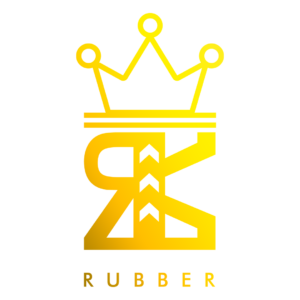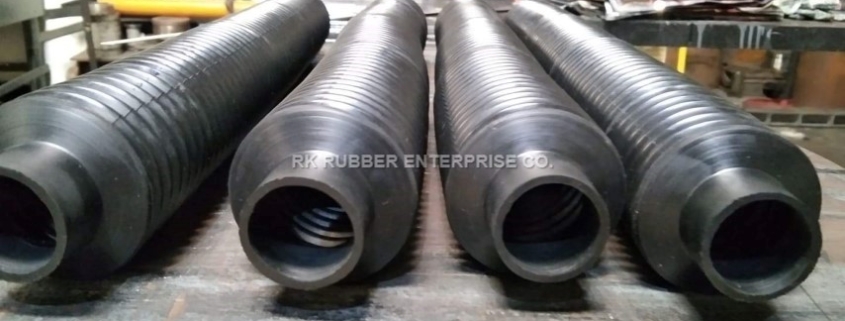Strong and Resilient: How Styrene-Butadiene (SBR) Enhances Rubber Product Performance
Styrene-Butadiene Rubber (SBR) enhances rubber product performance due to its exceptional durability, abrasion resistance, and flexibility. Developed initially as a synthetic substitute for natural rubber, SBR exhibits superior mechanical properties, particularly in high-wear applications like tires. Its variations, such as E-SBR and S-SBR, provide improved processing efficiency and wet grip, respectively. Additionally, advancements in production methods continue to optimize its characteristics for diverse applications. Further insights reveal the extensive advantages and sustainability initiatives associated with SBR.
Key Points
- Styrene-Butadiene Rubber (SBR) offers superior abrasion resistance, making it ideal for high-wear applications like automotive tires.
- Enhanced flexibility and elasticity of SBR contribute to its performance across various conditions, ensuring reliability in diverse environments.
- SBR formulations, particularly S-SBR, provide excellent wet grip and reduced rolling resistance, improving safety and fuel efficiency in vehicles.
- The production methods for SBR, such as emulsion and solution polymerization, significantly influence its mechanical properties and overall durability.
- Continuous innovations in SBR, including biodegradable options, align with sustainability goals while maintaining high-performance standards in rubber products.
The Evolution of Styrene-Butadiene Rubber
Although the development of Styrene-Butadiene Rubber (SBR) was primarily driven by the exigencies of World War II, its evolution has been characterized by a continuous adaptation to meet the demands of various industries. Initially created as a synthetic substitute for natural rubber, SBR’s formulation was optimized to enhance properties such as abrasion resistance and durability. The U.S. Synthetic Rubber Program facilitated this innovation, ensuring a reliable supply for military and civilian applications. Post-war, SBR’s versatility led to widespread adoption in sectors like automotive and construction, necessitating ongoing advancements. Innovations in production methods, including emulsion and solution polymerization, have further refined SBR’s performance characteristics, ensuring it meets stringent safety and operational standards across diverse applications.
Key Properties That Make SBR Stand Out
The distinctive properties of Styrene-Butadiene Rubber (SBR) contribute considerably to its widespread use across various industries. Its superior abrasion resistance makes it ideal for high-wear applications, particularly in tire manufacturing. Additionally, SBR exhibits moderate thermal stability, ensuring reliability in demanding environments. The copolymer’s lower Mooney viscosity, especially in E-SBR variants, enhances processing efficiency and product durability. Moreover, S-SBR formulations provide excellent wet grip and reduced rolling resistance, improving overall performance in automotive applications. The availability of biodegradable SBR formulations also supports sustainability initiatives without sacrificing key performance attributes. These properties render SBR a versatile and safe choice for a multitude of applications, reinforcing its position as a preferred material in contemporary rubber product development.
Production Methods and Their Impact on Performance
Understanding the production methods of Styrene-Butadiene Rubber (SBR) is critical for maximizing its performance characteristics and tailoring it for specific applications. The primary techniques, emulsion and solution polymerization, yield distinct types of SBR, each affecting performance metrics.
- Emulsion polymerization produces E-SBR, which exhibits lower Mooney viscosity and enhanced resilience.
- Solution polymerization results in S-SBR, recognized for superior wet grip and reduced rolling resistance.
- The choice of production method influences mechanical properties such as tensile strength and elongation.
- Environmental considerations are also impacted, as different methods vary in energy consumption and emissions.
These factors collectively dictate SBR’s suitability for various applications, emphasizing the importance of method selection in achieving ideal product performance and safety.
Major Applications of SBR in Various Industries
Styrene-Butadiene Rubber (SBR) is extensively utilized across various industries, primarily due to its advantageous properties such as durability and abrasion resistance. In automotive tire manufacturing, SBR plays a critical role in enhancing performance and safety, while its application in industrial seals and gaskets guarantees reliability in mechanical operations. Additionally, SBR’s versatility extends to consumer goods and construction material solutions, highlighting its significance in modern manufacturing processes.
Automotive Tire Manufacturing
A significant proportion of Styrene-Butadiene Rubber (SBR) is utilized in automotive tire manufacturing, where its properties are meticulously leveraged to enhance performance and safety. Key benefits of SBR in tire applications include:
- Abrasion Resistance: Reduces wear and extends tire life, essential for safety.
- Wet Grip: Improves traction in wet conditions, enhancing vehicle control.
- Low Rolling Resistance: Increases fuel efficiency, contributing to environmental sustainability.
- Thermal Stability: Guarantees durability under varying temperatures and stresses.
These attributes position SBR as an important material in tire production, aligning with industry demands for enhanced safety and performance. The combination of durability and cost-effectiveness makes SBR a preferred choice for manufacturers committed to delivering high-quality automotive tires.
Industrial Seals and Gaskets
The versatility of Styrene-Butadiene Rubber (SBR) extends beyond the automotive sector, finding considerable application in the manufacturing of industrial seals and gaskets. These components are essential for ensuring leak prevention and operational safety across various industries, including aerospace, construction, and manufacturing. SBR’s excellent abrasion resistance and moderate thermal stability make it ideal for high-stress environments.
| Application | Benefits |
|---|---|
| Seals | Leak prevention, durability |
| Gaskets | Chemical resistance, flexibility |
| O-rings | Customizable, reliable sealing |
The properties of SBR provide a reliable solution for critical applications, enhancing the longevity and functionality of industrial equipment while ensuring safety standards are met. SBR’s adaptability contributes considerably to the overall performance and efficiency of industrial operations.
Consumer Goods Applications
Consumer goods applications of Styrene-Butadiene Rubber (SBR) demonstrate its versatility and effectiveness across various sectors. SBR’s unique properties make it suitable for numerous consumer products, enhancing both performance and safety. Key applications include:
- Footwear: Utilized in soles for durability and abrasion resistance.
- Adhesives and Sealants: Provides strong bonding and weather resistance.
- Toys: Offers non-toxic formulations ensuring safety for children.
- Household Goods: Found in various items, including kitchenware, due to its flexibility and strength.
These applications highlight SBR’s role in producing reliable consumer goods that meet safety standards while delivering enhanced functionality. As industries continue to innovate, SBR’s contributions in consumer products will remain essential, ensuring quality and reliability in everyday items.
Construction Material Solutions
Significant advancements in rubber formulations have led to the increasing adoption of Styrene-Butadiene Rubber (SBR) in construction material solutions. SBR is utilized extensively in adhesives, sealants, and coatings due to its excellent adhesion properties and resistance to moisture, ensuring reliable performance in diverse applications. Its durability and abrasion resistance make it ideal for gaskets and expansion joints, which require longevity in demanding environments. In addition, SBR’s compatibility with various fillers enhances its mechanical properties, contributing to safer and more efficient construction practices. As construction safety standards evolve, SBR’s moderate thermal stability provides an additional layer of reliability, minimizing the risk of material failure. These attributes collectively position SBR as a critical component in modern construction material solutions.
Sustainability Efforts and Innovations in SBR
Although traditional SBR has been widely utilized across various industries for its performance and cost-effectiveness, sustainability efforts are increasingly shaping its future development. Innovations in SBR are aimed at reducing environmental impact while maintaining performance standards. Key sustainability initiatives include:
- Development of biodegradable SBR formulations to minimize waste.
- Utilization of recycled materials in SBR production to reduce resource consumption.
- Implementation of energy-efficient manufacturing processes to lower carbon footprints.
- Research into alternative raw materials that enhance sustainability without sacrificing quality.
These efforts reflect a growing commitment to environmental responsibility in the rubber industry, ensuring that SBR remains a viable option for manufacturers while addressing ecological concerns. The continuous evolution of SBR aligns with industry demands for safer, more sustainable products.
Safety Measures and Health Considerations
What measures are essential for ensuring safety in the handling of Styrene-Butadiene Rubber (SBR)? Proper safety protocols are critical to minimize health risks associated with SBR exposure. Personal protective equipment (PPE) such as gloves and respirators should be utilized to reduce inhalation and dermal exposure. Awareness of volatile organic compounds (VOCs) that may be present is crucial for maintaining a safe workplace.
| Safety Measure | Purpose | Recommended Equipment |
|---|---|---|
| Use of PPE | Mitigate exposure risks | Gloves, respirators |
| Proper ventilation | Reduce VOC concentration | Exhaust fans, air filters |
| Training and awareness | Understand handling risks | Safety training sessions |
These measures collectively foster a safer environment for workers involved in SBR-related operations.
Why Choose RK Rubber Enterprise Co. As Your Manufacturer In The Philippines
Choosing RK Rubber Enterprise Co. as a manufacturing partner in the Philippines presents a strategic advantage for businesses seeking high-quality Styrene-Butadiene Rubber (SBR) products. This company stands out due to its commitment to safety and performance in production.
- Expertise: Extensive experience in SBR manufacturing guarantees superior product quality.
- Compliance: Adherence to international safety standards mitigates health risks associated with SBR.
- Customization: Tailored solutions meet specific client needs, enhancing operational efficiency.
- Sustainability: Adoption of eco-friendly practices aligns with modern environmental standards.
Frequently Asked Questions
What Are the Environmental Impacts of SBR Production?
The environmental impacts of SBR production include potential pollution from volatile organic compounds, energy consumption during manufacturing, and challenges in waste management. Sustainable practices and recycling initiatives are essential for minimizing these negative effects and enhancing ecological safety.
How Does SBR Compare to Natural Rubber in Performance?
SBR outperforms natural rubber in abrasion resistance and cost-effectiveness, making it preferable for high-wear applications. However, natural rubber offers superior elasticity and weather resistance, highlighting the importance of application-specific material selection for peak performance and safety.
Can SBR Be Recycled Effectively?
SBR can be recycled effectively, allowing for material recovery and minimizing waste. Implementing proper recycling protocols enhances sustainability while ensuring safety, as awareness of potential health hazards during processing is essential for worker protection and environmental integrity.
What Innovations Are Being Explored for SBR Formulations?
Innovations in SBR formulations are focusing on enhancing biodegradability, improving thermal stability, and reducing environmental impact. These advancements aim to maintain performance while addressing sustainability concerns and ensuring safety in various industrial applications.
What Industries Are Emerging as New Markets for SBR?
As industries evolve, Styrene-Butadiene Rubber (SBR) emerges like a chameleon, adapting to new markets such as renewable energy, medical devices, and sustainable construction, where safety and performance are paramount in product development and application.
Conclusion
In summary, Styrene-Butadiene Rubber (SBR) stands as a resilient pillar within the rubber industry, embodying a synthesis of innovation and adaptability. Its robust properties and versatile applications position it as a critical material across multiple sectors. As the industry navigates towards sustainability, SBR’s evolution reflects a commitment to both performance and ecological responsibility. Choosing a reliable manufacturer like RK Rubber Enterprise Co. guarantees access to high-quality SBR products, reinforcing the foundation upon which modern advancements are built.

